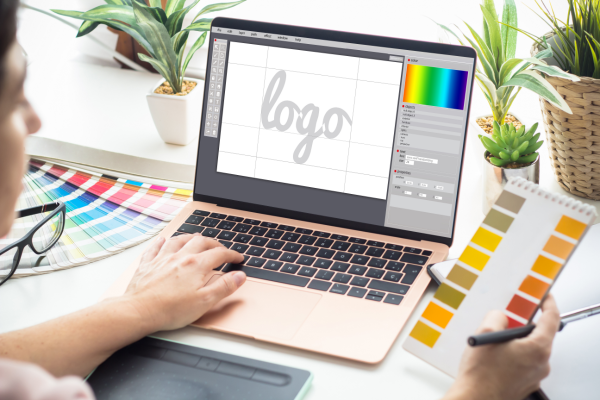Best Freelance Platforms for Designers
As a freelance designer, finding the right platform to showcase your skills and connect with potential clients can make all the difference in building a successful career. There are numerous freelance platforms available, each offering unique features and opportunities. Here is a comprehensive guide to the best freelance platforms for designers, helping you decide where to focus your efforts.
1. Upwork
Overview: Upwork is a highly popular and extensive freelance platform that encompasses a broad spectrum of job categories, including design. It offers freelancers a venue to submit bids on projects listed by clients globally.
Pros:
- Large pool of clients and projects.
- Secure payment system with escrow protection.
- Opportunity to build long-term relationships with clients.
Cons:
- High competition can drive down prices.
- Service fees can be high (up to 20% depending on earnings).
Tips for Success:
- Create a detailed profile showcasing your skills and portfolio.
- Write personalized proposals for each project.
- Start with lower-priced projects to build your reputation and gain positive reviews.
2. Fiverr
Overview: Fiverr is a platform where freelancers offer “gigs” starting at $5. It’s popular for creative services, including graphic design, logo creation, and more. Freelancers can create packages with varying price points based on the complexity of the work.
Pros:
- Easy to set up and start selling.
- Offers a wide range of categories and services.
- Allows for upselling through different gig packages.
Cons:
- Starting prices can be low, requiring higher volume for substantial earnings.
- Service fees apply to each transaction.
Tips for Success:
- Create clear, appealing gig descriptions and visuals.
- Offer fast delivery and excellent customer service.
- Use Fiverr’s promotional tools to increase visibility.
3. Behance
Overview: Behance is a platform by Adobe that allows designers to showcase their portfolios and connect with potential clients. It is more of a social network for creatives, enabling you to display your work, gain followers, and receive feedback.
Pros:
- Great for building a professional portfolio.
- Connects you with other creatives and potential clients.
- High visibility within the design community.
Cons:
- Not a traditional job marketplace; may require additional effort to find clients.
- Competitive environment with many high-quality portfolios.
Tips for Success:
- Regularly update your portfolio with new and diverse projects.
- Engage with other users by commenting and following.
- Use Behance ProSite to create a personalized portfolio website.
4. Dribbble
Overview: Dribbble is a community of designers that allows you to share small screenshots (shots) of your work, get feedback, and find job opportunities. It’s known for its focus on quality and creativity.
Pros:
- Highly visual platform ideal for designers.
- Great exposure to a community of design enthusiasts and potential clients.
- Job board specifically for design roles.
Cons:
- Invitation-only sign-up for full access, which can be a barrier for new users.
- Primarily used for showcasing work rather than direct job listings.
Tips for Success:
- Post high-quality, eye-catching shots regularly.
- Participate in Dribbble challenges and community activities.
- Use the job board to find freelance and full-time opportunities.
5. Freelancer
Overview: Freelancer is a global freelance marketplace where designers can bid on projects across various categories. It offers both short-term gigs and long-term projects.
Pros:
- Wide range of projects and clients.
- Milestone payment system ensures secure transactions.
- Option to enter contests to showcase skills and win projects.
Cons:
- High competition can make it challenging to win bids.
- Service fees on completed projects.
Tips for Success:
- Create a detailed profile with a strong portfolio.
- Bid on projects that match your skills and experience.
- Participate in design contests to gain exposure and build your portfolio.
6. Toptal
Overview: Toptal is a platform that connects clients with top freelancers in design, development, and finance. It has a rigorous screening process to ensure only the top 3% of freelancers are accepted.
Pros:
- Access to high-quality clients and projects.
- Premium rates for top-tier talent.
- Secure payment system with no service fees for freelancers.
Cons:
- Rigorous application process can be challenging.
- Limited to top-tier freelancers, which may exclude beginners.
Tips for Success:
- Prepare thoroughly for the screening process with a strong portfolio and case studies.
- Be ready to demonstrate your skills in real-time assessments.
- Leverage the platform’s resources and support to find high-paying clients.
7. 99designs
Overview: 99designs is a platform specifically for designers to find freelance work through design contests. Clients post a brief, and designers submit their entries, with the client choosing the best design.
Pros:
- Focused solely on design projects.
- Opportunity to win high-paying contests.
- Build your portfolio through diverse projects.
Cons:
- Spec work model can lead to unpaid submissions.
- Competitive environment with many designers vying for the same projects.
Tips for Success:
- Carefully read and understand client briefs before submitting designs.
- Use feedback from clients to improve your submissions.
- Build a strong portfolio to attract direct hire opportunities.
8. PeoplePerHour
Overview: PeoplePerHour connects clients with freelancers for various projects, including design. Freelancers can post hourlies (pre-packaged services) or bid on job postings.
Pros:
- Flexible platform with both fixed-price and hourly projects.
- Secure payment system with escrow protection.
- Option to post offers and packages for clients to purchase directly.
Cons:
- High competition can make it difficult to secure projects initially.
- Service fees on earnings.
Tips for Success:
- Create compelling hourlies that showcase your skills.
- Bid on projects that match your expertise and experience.
- Maintain a high level of communication and professionalism with clients.
9. Guru
Overview: Guru is a freelance marketplace that offers a wide range of job categories, including design. It features a workroom for managing projects and collaborating with clients.
Pros:
- Secure payment system with SafePay.
- Workroom for efficient project management.
- Diverse range of job categories and projects.
Cons:
- Service fees on earnings.
- High competition for jobs.
Tips for Success:
- Build a comprehensive profile with a strong portfolio.
- Bid on projects that align with your skills and experience.
- Use the workroom features to collaborate effectively with clients.
Conclusion
Each platform offers unique features and opportunities, so it’s essential to find the ones that best match your skills and goals. By leveraging these platforms effectively, you can showcase your work, connect with potential clients, and build a thriving freelance career. Remember to maintain a professional profile, engage with the community, and continuously update your portfolio to stay competitive in the dynamic world of freelance design.





